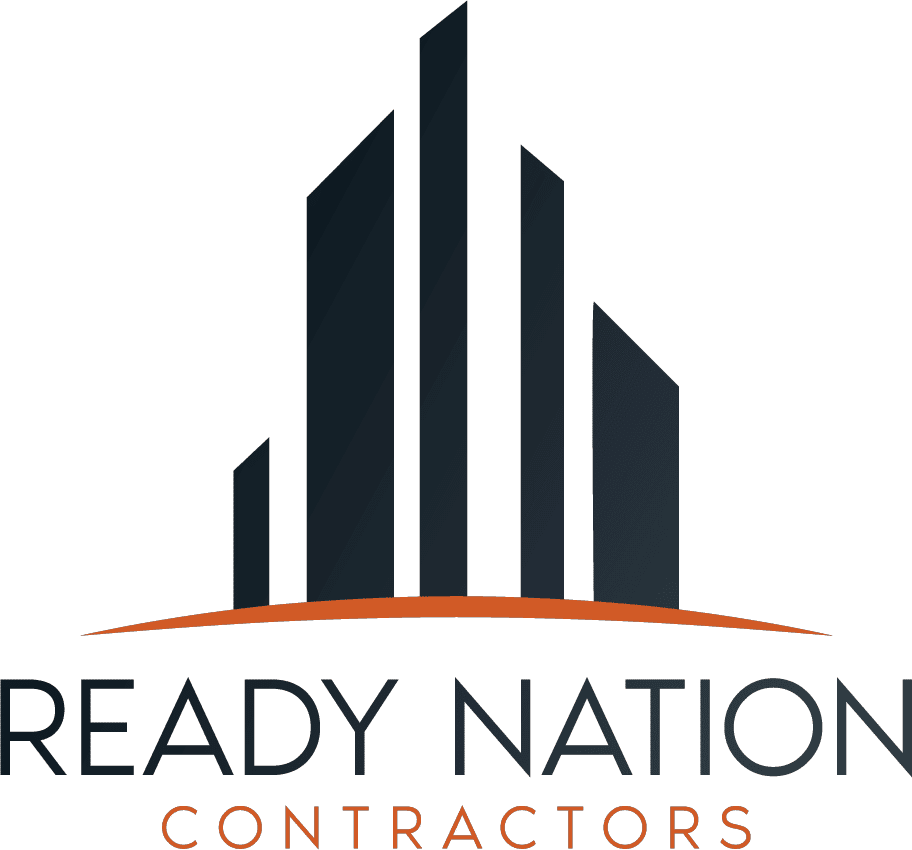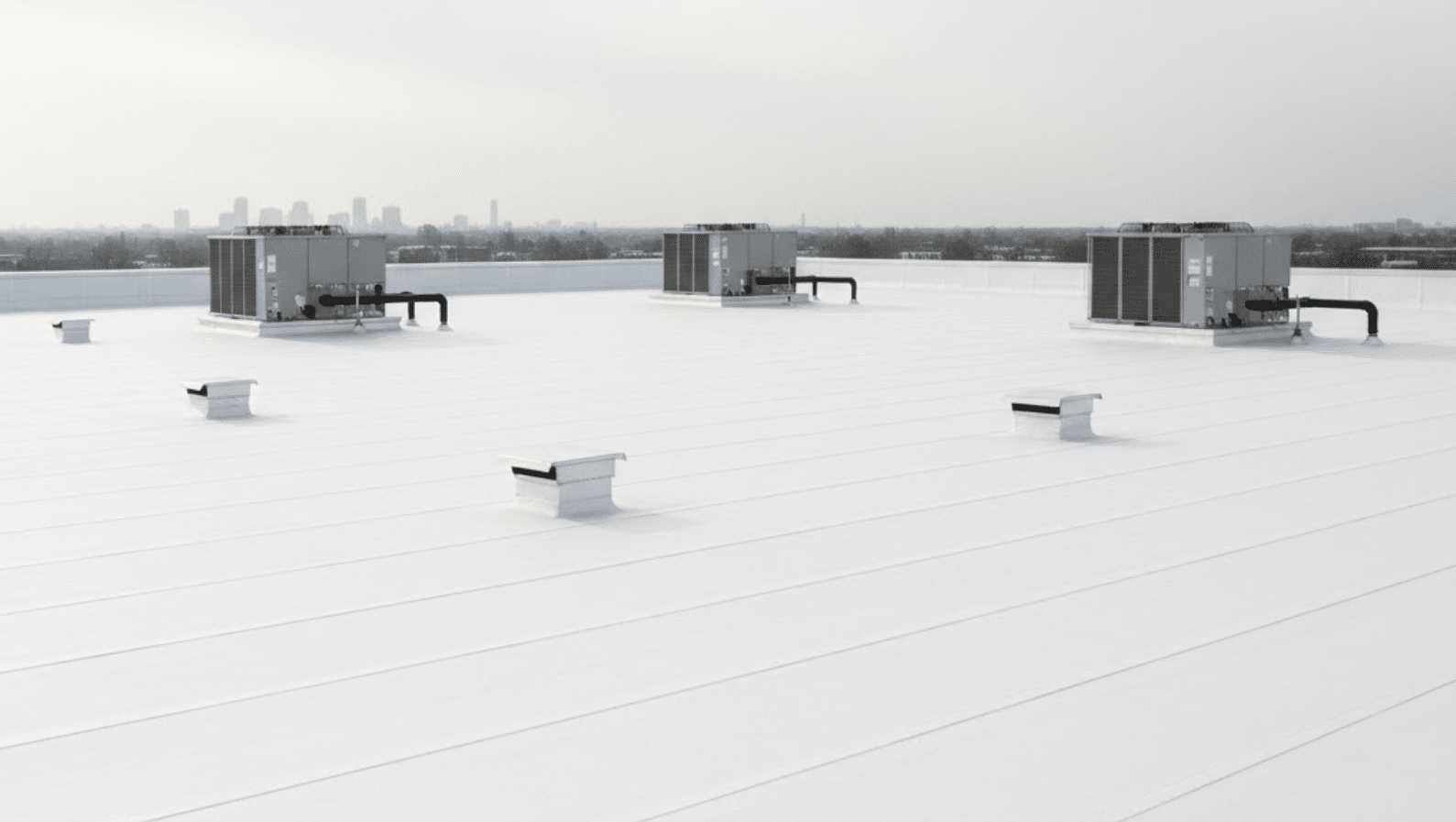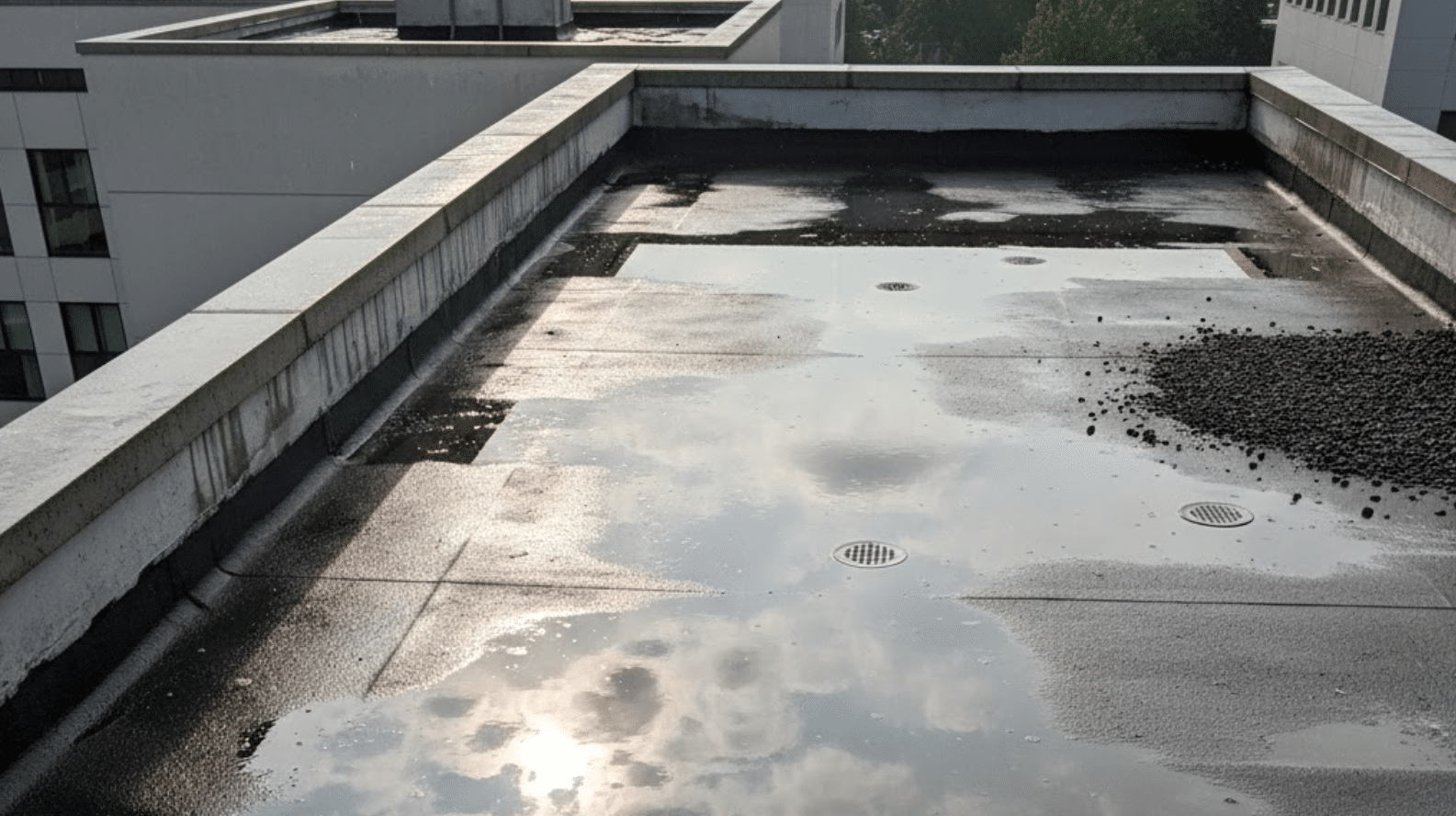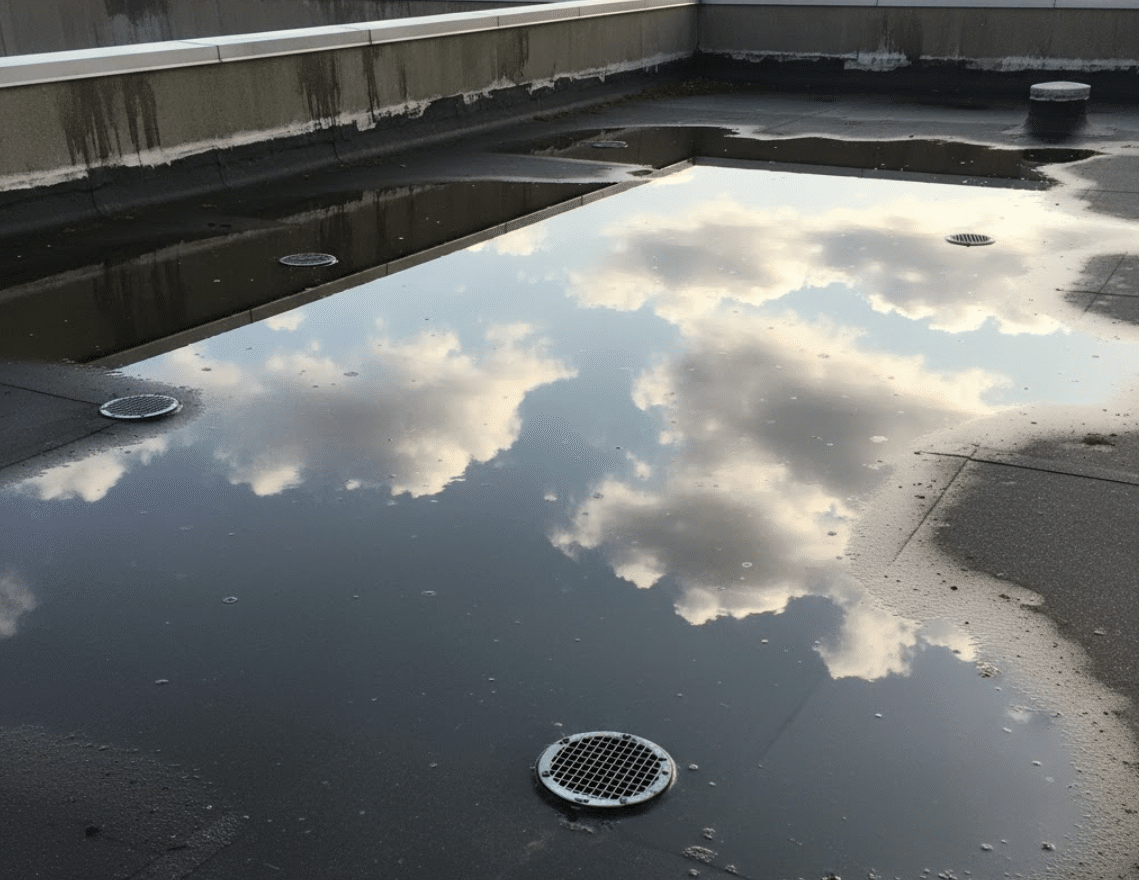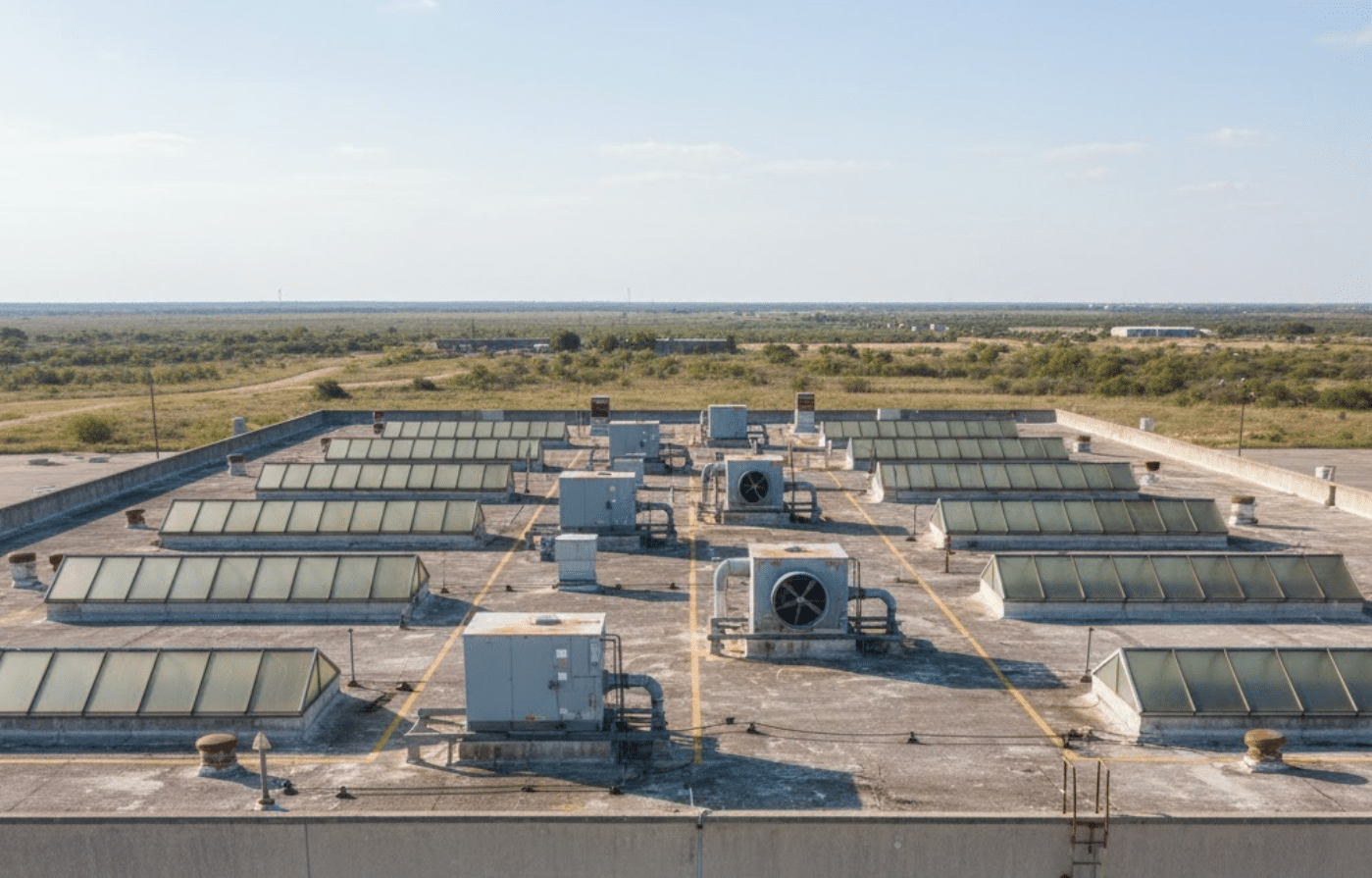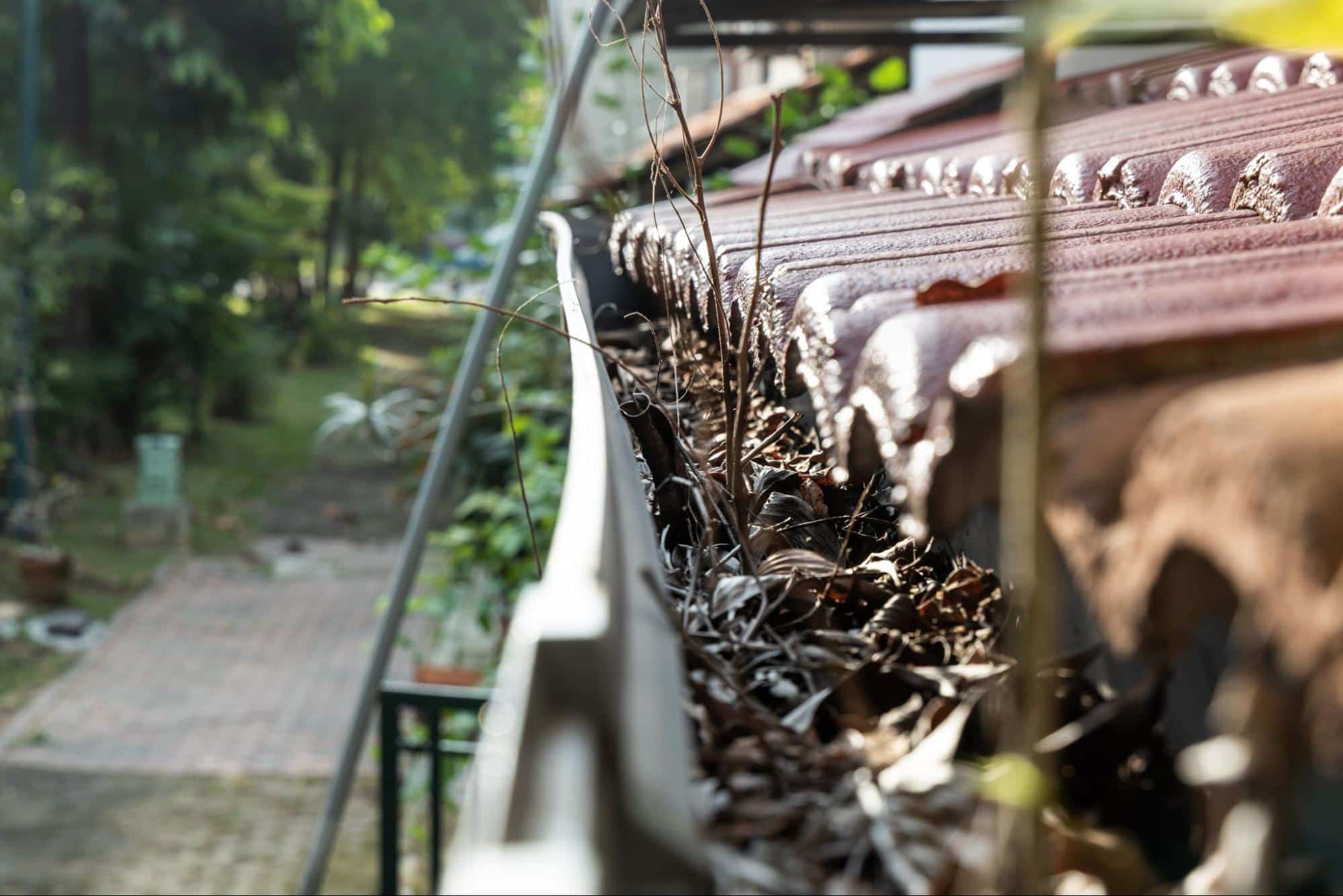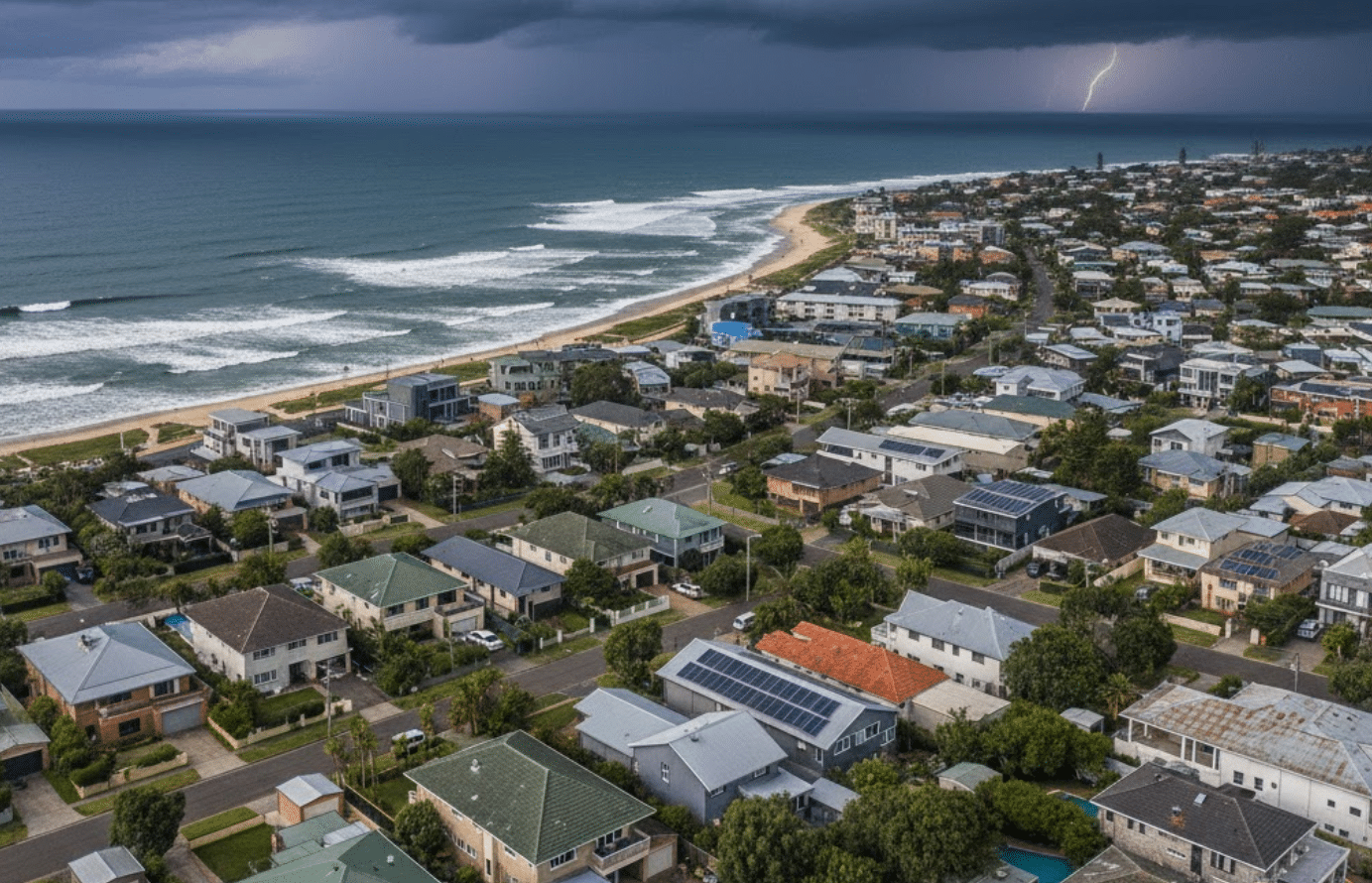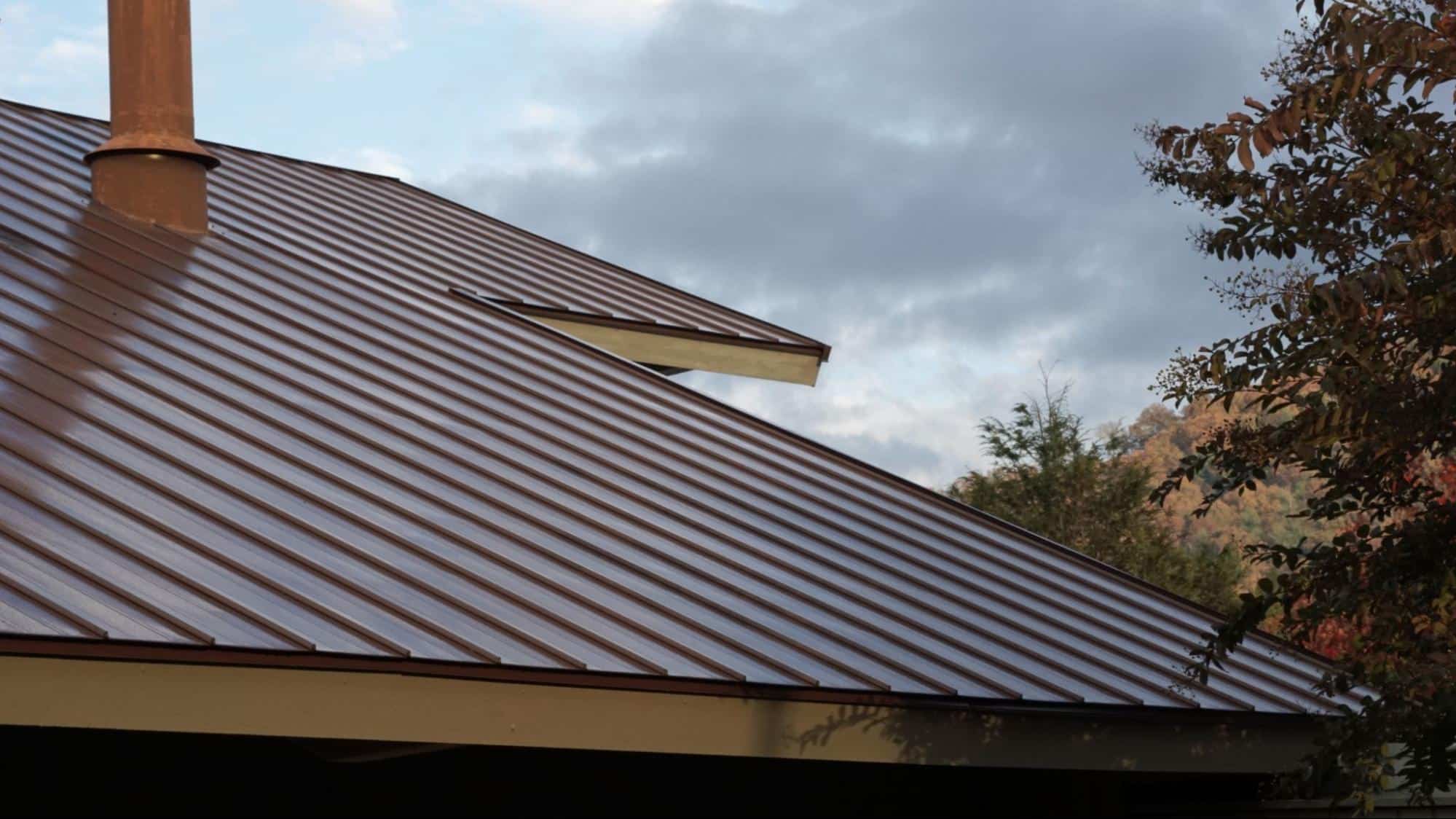Storm seasons along the Gulf Coast bring intense weather conditions that are particularly rough on flat roofs, exposing them to high winds, heavy rainfall, and persistent moisture. Leaks at seams, ponding water, and wind-driven debris can escalate fast across Florida and Texas markets. We’re Ready Nation Contractors (RNC US), here to break down roof repair, and specifically, flat roof repair costs, in plain terms.
With deep experience in commercial and residential roofing, we deliver clear scopes, documented inspections, and responsive service. When you search for “RNC contractors near me” or “Ready Nation Contractors services,” you want straight answers: what impacts cost, how local markets differ, and when to repair versus reroof. We’ll cover cost drivers, material considerations, regional differences, and how to get an accurate estimate.
Need help now? Learn more about our roofing solutions or contact us for a no-obligation assessment.
What Drives Flat Roof Repair Cost
Roof Type And Material
Different flat roofing systems behave, and repair, differently. TPO and PVC membranes are heat-welded: EPDM is typically glued and seamed with tapes: modified bitumen and built-up roofs need torch or cold-applied work: metal sections often require fabrication. The material you have, its thickness, and whether it’s mechanically attached, fully adhered, or ballasted will all influence repair methods and time on site.
Repair Scope And Severity
A small blister or single seam split is one thing. Saturated insulation across several areas with underlying deck issues is another. The size of the repair, the number of locations, and whether we’re addressing root causes (drainage, flashing transitions, curb details) are key variables. More complexity means more labor, more detail work, and potentially more materials.
Access, Height, And Safety Requirements
Tight downtown sites, limited staging, multi-story access, parapet height, and OSHA tie-off requirements affect crew size and setup time. Crane or lift needs, equipment hoisting, and debris removal logistics also factor in. Safer setups and proper access planning keep the project efficient but do show up in the estimate.
Labor Rates And Seasonality
Labor markets in Miami or Austin run differently than Panama City or Odessa. Peak storm seasons can compress schedules and increase demand. Local labor availability, overtime needs for weather windows, and fast-track mobilization are all elements that can move the needle on cost.
Moisture Intrusion And Hidden Damage
Flat roof repairs often reveal more once we open the system. Wet insulation, deteriorated fasteners, rust at metal decks, or compromised wood decking drive additional scope. We mitigate surprises through moisture scans and targeted core cuts, but contingency planning is smart on older or heavily weathered roofs.
For a deeper look at our company history and credentials, see how Ready Nation Contractors got started. And if storms are the culprit, discover how we respond to storm damage and provide 24/7 emergency services.
Typical Price Ranges And Cost Per Square Foot

Minor Patch And Leak Repairs
Quick-response patches for small punctures, isolated seam openings, or a single compromised penetration are typically the most budget-friendly category. Expect modest material usage and short crew time when access is straightforward and the membrane is in generally good condition.
Seam, Flashing, And Penetration Repairs
Repairs that involve re-welding TPO/PVC seams, replacing deteriorated EPDM tapes, or reworking flashings at curbs, walls, skylights, and HVAC units take more precision. Detailing penetrations correctly, boots, sealant, and reinforcement, adds labor but prevents repeat leaks.
Ponding Water And Drainage Corrections
Correcting ponding means addressing slope and flow. That may include cleaning and resetting drains, adding tapered insulation crickets, or adjusting scuppers. Drainage fixes tend to be more involved than simple patches because they tackle the cause, not just the symptom.
Partial Membrane Replacement
When a section is too worn or saturated to spot-repair, a partial tear-off and replacement makes sense. This tier includes substrate repairs, new insulation, and membrane tie-ins. It requires more materials, more safety controls, and careful transitions to the existing roof.
Average Cost Per Square Foot
Per-square-foot figures depend on the work category, material type, roof height, and how many mobilizations are needed. Small, surgical repairs skew toward minimum service charges: larger, contiguous scopes can become more efficient per square foot. We’ll outline both the base scope and any variable add-ons in writing so you know exactly what drives the number.
Material-Specific Repair Costs
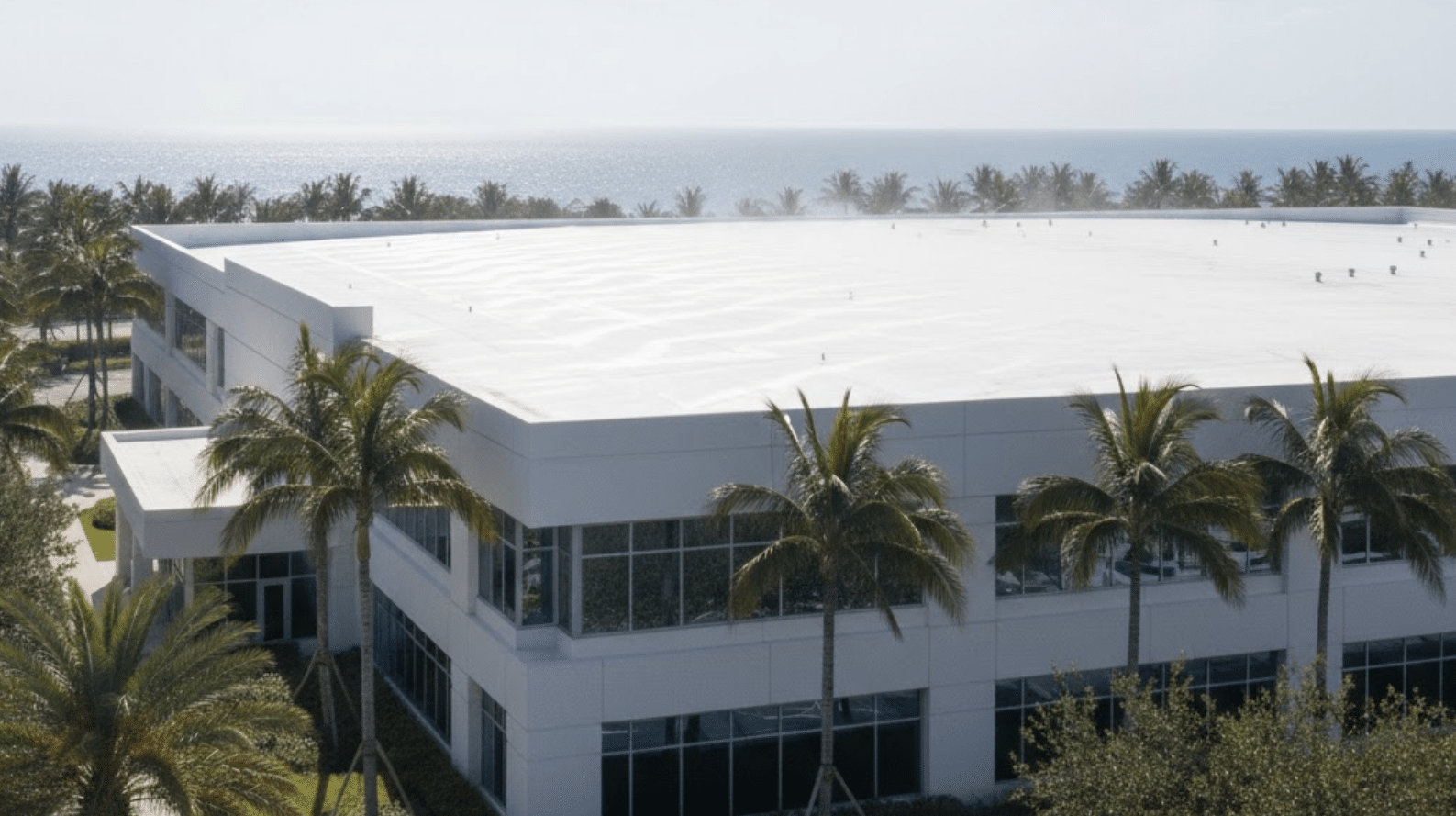
TPO And PVC
Thermoplastic membranes are heat-weldable, which is great for durable seam repairs and patches. Costs depend on membrane thickness, the need for cover board repairs, and whether we’re addressing wide seam failures or isolated punctures. Proper surface prep and weld quality are everything here.
EPDM Rubber
EPDM repairs rely on primers, tapes, and adhesives. Older membranes with surface oxidation require extra prep. Large field seams or flashing terminations can take time to rework cleanly. Access around rooftop equipment, curbs, sleepers, and conduits, often dictates labor hours.
Modified Bitumen And Built-Up Roofing
Mod-bit and BUR systems may require torch or cold-applied techniques, reinforcement plies, and granular surfacing. Tie-ins at edges and penetrations drive detailing time. Where moisture has migrated into felts, selective tear-off and deck checks can become part of the scope.
Metal Flat Roof Sections
Metal sections near low-slope areas or transitions call for panel repairs, fastener upgrades, seam sealants, and sometimes custom fabrication. Thermal movement has to be respected: detailing that allows expansion/contraction prevents future issues.
Curious which system you have? We’ll identify it during inspection. Learn about our general contracting capabilities for broader building envelope upgrades that can be bundled for efficiency.
Regional Pricing: Florida And Texas Gulf Coast Markets
Tampa–St. Petersburg And Panama City
Coastal exposure, higher humidity, and frequent storm cycles can accelerate wear. In these markets, we factor in corrosion control, more robust perimeter details, and scheduling around afternoon storms. Local codes also emphasize wind resistance and secure edge metal.
Miami
Miami’s labor market, high-rise access challenges, and stricter code enforcement influence project planning and cost structures. Expect more emphasis on wind-uplift compliance, enhanced fastening patterns, and detailed inspections. Mobilization and permits can take longer in dense urban zones.
Dallas And Austin
Hail and high-wind events shift the focus to impact resistance, cover board upgrades, and documentation for insurance carriers. Access is often easier than coastal cores, but large roof footprints and mechanical congestion around tech campuses can add complexity.
Odessa And Lafayette
Wide temperature swings and strong winds put stress on seams and fasteners. We often recommend fastener/plate upgrades and reinforced flashing details. Logistics can involve longer material hauls, which we plan around to keep schedules tight.
Permits, Codes, and Wind/Uplift Requirements
Florida Building Code and local Texas jurisdictions specify wind zones, uplift requirements, and edge metal standards. Compliance affects fastening density, substrate requirements, and inspection steps. We coordinate permits and inspections to keep your project clean and compliant.
See where Ready Nation Contractors operates to understand how we staff and stage across markets, and review the industries we serve for sector-specific experience.
Repair Vs. Reroof: When Does It Make Sense?
Age And Remaining Service Life
A newer membrane with localized issues is a repair candidate. A system nearing the end of its service life, shrinking, brittle, or repeatedly patched, may justify a larger capital plan. We’ll give you a realistic service-life estimate based on field conditions.
Wet Insulation And System Saturation
Once insulation is wet, R-values drop and leaks chase across the deck. Targeted tear-off in saturated zones is often smarter than chasing symptoms. Infrared scans and core cuts reveal the true picture so we can recommend the right path.
Repeated Leak History And Warranty Status
Chronic leaks at the same locations suggest underlying design or installation flaws. If a manufacturer warranty is in play, we follow their repair protocols to protect coverage. No warranty? We’ll still spec warrantable details to set you up for future coverage when feasible.
Cost Thresholds To Consider
When cumulative repair scopes approach a meaningful share of a reroof budget, owners often shift to phased replacement. We model both options, including energy savings from new insulation or cool-roof membranes, so you can compare total cost of ownership over time.
For storm-related issues, learn how we assess and repair storm damage and review our approach to emergency response. They outline documentation and temporary protection steps that help with claims and limit interior damage. If moisture affected interiors, our water damage restoration specialists can help stabilize and dry the space fast.
How To Get An Accurate Estimate And Control Costs
Inspection, Moisture Scans, And Core Cuts
Reliable numbers start with data. We perform visual inspections, pull cores where needed, and use infrared or capacitance scans to map hidden moisture. Photos and annotated roof plans accompany every proposal so you can see exactly what we see.
Scope Clarity And Comparable Bids
Ask every contractor to quote the same scope with the same assumptions. Define access (lifts, cranes), debris handling, substrate repairs, and contingencies. Apples-to-apples comparisons protect you from “low” bids that balloon later.
Questions To Ask Your Contractor
- What’s your plan for wet insulation or deck damage discovered mid-repair?
- How will you handle occupied building access and safety?
- Which details are you upgrading to prevent repeat leaks (drains, penetrations, term bars)?
- What workmanship warranty is included, and what voids it?
Insurance, Storm Damage, And Warranty Claims
Document everything, date-stamped photos, leak locations, ceiling stains. We coordinate with carriers and, when applicable, manufacturers to align repair methods with coverage requirements. For rapid events, contact us anytime: our emergency crews are on-call 24/7.
Timeline, Access, And Occupant Disruption
We sequence noisy or odor-producing work during off-hours when possible. Clear communication with tenants, managers, and facility teams reduces callbacks and keeps the project smooth. Expect a schedule with milestones and weather contingencies.
Preventive Maintenance To Avoid Future Repairs
Semiannual inspections, debris removal, sealant touch-ups, and drain cleaning extend roof life and keep costs predictable. After major weather, a quick check can save a season of headaches. Read our latest maintenance tips and insights, and coordinate rooftop HVAC equipment service when units or curbs are part of the scope. For multi-property portfolios, explore our commercial restoration services to bundle services and standardize specs.
Conclusion
Flat roof repair cost isn’t a mystery when you break it down by material, scope, access, and regional demands. In coastal Florida, from Tampa–St. Petersburg to Panama City and Miami, and across Texas markets like Dallas, Austin, and Odessa, we tailor solutions that solve today’s leak and reduce tomorrow’s risk. That’s the Ready Nation Contractors way: clear scopes, documented inspections, and workmanship that stands up to wind, rain, and relentless sun. To get started, schedule your inspection and estimate.
Frequently Asked Questions
How much does flat roof repair typically cost?
Flat roof repair costs vary based on material type, damage extent, and location. Minor patches and leak repairs are the most affordable, while partial membrane replacements or drainage corrections cost more. Per-square-foot pricing depends on roof height, access difficulty, and whether hidden damage like wet insulation is discovered. We provide detailed written estimates after inspection so you know exactly what drives your number.
How long does a flat roof repair take?
Most minor repairs—small punctures, isolated seam splits—can be completed in a day or less. Larger scopes involving flashing rework, drainage corrections, or partial membrane replacement may take several days, depending on weather windows and substrate work. We provide a schedule with milestones and coordinate around your building’s operations to minimize disruption.
Will insurance cover my flat roof repair?
Coverage depends on your policy and the cause of damage. Storm-related issues—wind, hail, flying debris—are often covered, while general wear or deferred maintenance typically are not. Document everything with date-stamped photos and leak locations. We work directly with carriers, provide detailed reports, and follow manufacturer repair protocols to support your claim.
How often should I inspect my flat roof?
Inspect twice a year—spring and fall—and after major weather events. Regular checks catch small issues before they escalate: debris around drains, sealant gaps at penetrations, membrane shrinkage, or ponding water. Semiannual inspections, combined with prompt repairs, extend roof life and keep costs predictable. We offer maintenance programs tailored to Gulf Coast climates.
